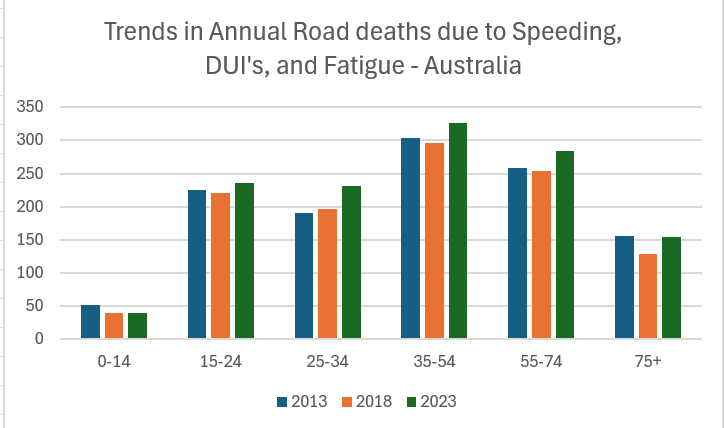Information on Common Driving Risks
Stay informed about the common road risks in Canberra and how to avoid them. Safe Drivers is committed to raising awareness for safer roads for everyone. Being a teen driver in Australia comes with high risks. Knowing the top dangers can help you make safer choices every time you get behind the wheel.
“Speeding, distractions, fatigue, alcohol: the 4 choices that cost young lives.”
4 Key Teen Driving Risks

Speeding: Nearly 80% of P-platers admit to speeding on recent trips. Even slight excesses over the limit (10 - 25 km/h) can lead to a drastic increase in crash risk. Speeding is the #1 cause of fatal crashes in young drivers.
Driving while fatigued: Around 1 in 4 learner drivers report driving when very tired. Teens frequently have to balance school, work, and social life, so late-night driving is common. Fatigue contributes to up to 30% of fatal crashes among young drivers.
Distraction: Teen drivers are easily distracted. Texting, checking social media, or even adjusting music can triple crash risk. Distracted driving is a major cause of serious crashes among 16-25 year olds.
Alcohol and Drug Use: About 4 percent of 16 to 17 year olds admitted to driving under the influence in the last year. Teens who drink or use marijuana are 4 times as likely to engage in risky driving. Being a passenger with an impaired driver also increases your chances of risky driving in the future.

Visual Statistics

(Data collected from National Road Safety Data Hub)
Road crashes are a major cause of death among young Australians, with 15-24 year olds representing approximately 25% of all deaths in this age group. Between 2018 and 2023, teen road deaths have increased by 7.3% while total road deaths have risen by 11.9%, meaning that young drivers are still at a high risk. Common dangers include speeding up, fatigue, distraction and alcohol or drug use. Even minor errors can lead to death, as most teen deaths involve people who were in a single-vehicle crash. These statistics underscore the need for teens to drive responsibly, follow the rules of the road and avoid risky behaviour each time they get behind the wheel.
In 2016, LSAC data indicated that risky driving was prevalent among teenagers aged 16-17 years old, with 78% of P-platers and 55% of learner drivers reporting undertaking at least one risky behaviour on their last ten trips (Vassallo, 2018). Speeding by up to 10 kilometers per hour and driving when tired were the most common behaviors, and 4% admitted to driving under the influence of alcohol or drugs. Rates of non-use of seatbelts or helmets were similar across licence types (around 7-10%). Factors such as licence type, substance use, residence in rural areas, employment and conduct problems were significantly linked to an increased risky driving prevalence (LSAC, 2018; Vassallo et al., 2007).

(Data from AIFS study)

Young people in Australia are over-represented significantly in road mortality as a result of mismanagement of driving behaviour. In 2014, the death rate per 100,000 persons among 12-17 year olds was 2.0, whereas the rate among 18-24 year olds was more than four times higher, at 8.2 per 100,000. Males were especially vulnerable, with 8.0 deaths per 100,000 males versus 2.9 females. Drivers had the highest fatality rate (2.4 per 100,000), followed by passengers (1.5), motorcyclists (0.9), and pedestrians (0.6). Risky behaviours such as speeding, driving while fatigued and driving while under the influence of alcohol or drugs are major contributors - young drivers are more likely to crash at night or on weekends.
(Data from National Youth Information Framework)
The 'real' outcome of stupidity

An unfortunate incident where a bright young man lost his life because he wanted to impress a girl by speeding at 166kph in a 100kph freeway.

A gruesome crash where a group of 4 friend, 2 boys and 2 girls were returning home from a party intoxicated and the driver lost consciousness and veered off into a street light.
How risky are you behind the wheel?
This survey helps us understand risky driving behaviours across Australia especially for teenagers.
Stay Safe on Canberra Roads
Prioritise safety by staying informed and practising defensive driving techniques. By understanding common hazards and overlooked rules, you can contribute to safer roads for everyone in Canberra.
How's your experience with SafeDrivers so far?
